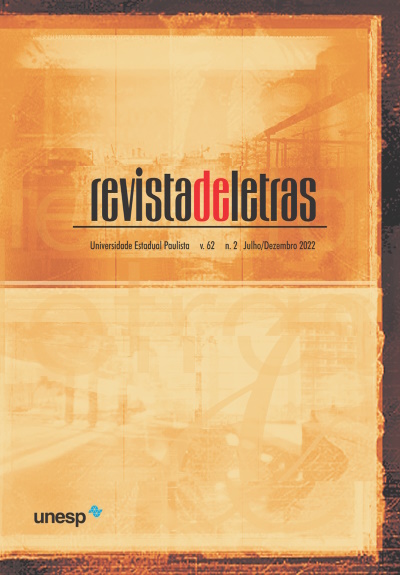The Golden Bowl, by Henry James
the syntax and semantics of the modernist space disrupting the reader’s attention
Keywords:
Henry James, Space, Syntax, Semantics, Modernism, Readerly attentionAbstract
The works of Henry James (1843–1916) are often considered precursors of English-language modernism due to their treatment of consciousness. To represent the characters’ mental activity, James employs long and winding sentences, ambiguities, and subtle inversions of word order. As a result, the language he uses becomes aesthetically self-centered. Building upon this notion, our aim is to analyze how James employs these techniques to linguistically elaborate on the narrative category of space in his novel, The Golden Bowl, which was published in 1904. We propose that the author prefigures literary modernism by employing syntax and semantics to construct space – or the material dimension around the characters – in a distinctive manner. To conduct this analysis, we draw upon the insights of Luis Alberto Brandão (2013), Kate Stanley (2013), Stephen Kern (2011), Malcolm Bradbury and James Mcfarlane (1991), and Mary Cross (1981). Our findings reveal that the spatiality of The Golden Bowl, being an integral part of a structure that prioritizes the medium itself, moves away from mere empirical or accessory representation of material reality. Instead, spatiality gains formal prominence by actively interrupting expected linguistic continuities and destabilizing the reader’s attention.
Downloads
Published
Issue
Section
License
Os manuscritos aceitos e publicados são de propriedade da Revista de Letras. Os originais deverão ser acompanhados de documentos de transferência de direitos autorais contendo assinatura dos autores.
É vedada a submissão integral ou parcial do manuscrito a qualquer outro periódico.
A responsabilidade do conteúdo dos artigos é exclusiva dos autores.
É vedada a tradução para outro idioma sem a autorização escrita do Editor ouvida a Comissão Editorial.

